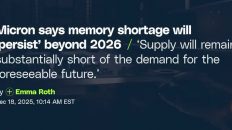Understanding Nvidia's Latest Earnings and Future Prospects
I'm convinced that Wall Street still doesn't understand Nvidia. Whether you're a longtime shareholder or you're thinking about buying Nvidia stock for the first time, you should know that this earnings call wasn't just about revenues or profit margins. Nvidia just showed everyone why they're the king of the entire AI revolution. In this post, we'll break down everything you need to know about Nvidia's latest earnings and what that means for Nvidia stock in 2025, 2026, and beyond.
Your time is valuable, so let's get right into it. As always, I'm not here to hold you hostage, so here's everything I'll talk about up front. Nvidia's latest earnings results, focusing on data centers. I'll walk you through a few things that most investors still don't understand about Nvidia's AI chips. I'll tell you my thoughts on Nvidia stock, and whether I'd still buy it now that it's worth $4.5 trillion, making it the most valuable company on earth.
Table of Contents
1. Nvidia's Latest Earnings Results
2. Understanding Nvidia's AI Chips
3. Thoughts on Nvidia Stock
And of course, where Nvidia goes on my list of stocks to get rich without getting lucky in 2025, which I said I'd cover more over the rest of the year. So here's the list I made back in December with each stock's year-to-date performance and how it's doing versus the S&P 500. As you can see, we're outperforming the market by a large margin. And now we're just adjusting the order based on the latest information. So with that said, let's dive right into Nvidia's latest earnings results.
Nvidia reported revenues of $46.7 billion for the quarter, which is up 6% quarter over quarter and a whopping 56 percent year over year. Nvidia posted earnings per share of one dollar and eight cents, which is up by 61 percent from last year's 67 cents per share. Just think about these numbers for a second: the biggest company in the world is still growing revenues and earnings by over 50 percent per year. That's not something the stock market sees very often. Anyway, Nvidia has four major business units.
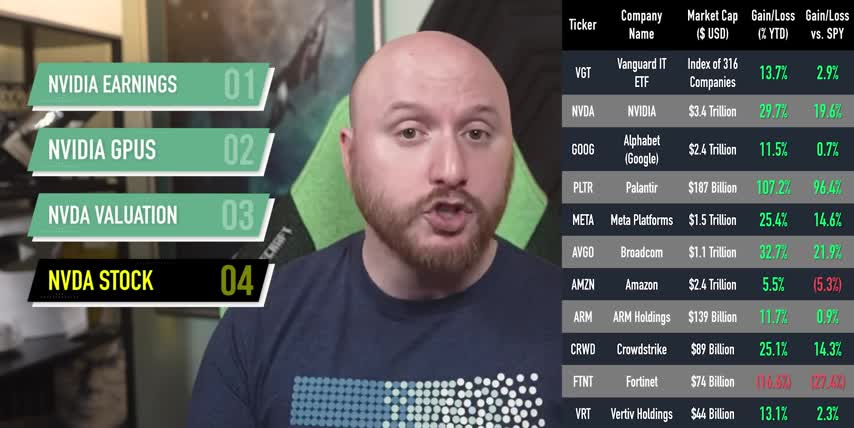
Data Center, Gaming, Professional Visualization, and Automotive. I'll stick to data centers just because it accounts for 88% of their total revenues. And it's growing over 5 times faster than any of their other segments. Nvidia's data center revenues came in at $41.1 billion, which was up 5% from last quarter and 56% from last year. There are two important points about these numbers. First, there were no H20 GPUs sales to China this past quarter.
Nvidia's Earnings Breakdown
Remember, Nvidia was able to sell 4.6 billion dollars of those GPUs to China in quarter one, before the trade restrictions kicked in. Plus, they sold another 2.5 billion dollars worth of chips that they weren't allowed to ship. That would be another 7.1 billion dollars or 17% more data center revenue without these restrictions, assuming they wouldn't grow their China sales at all. Nvidia's guidance for next quarter also assumes no-chip sales to China.
Understanding Nvidia's AI Chips
That means any policy changes that let Nvidia sell chips to China are now pure upside for the stock, even if they come with an added 15% tax from the US government. The second point is that Blackwell sales are still ramping up. Nvidia's Blackwell data center revenue grew by 17% quarter over quarter, which would be 87% growth on an annualized basis. That means that even if Nvidia's Blackwell sales don't accelerate from here, their overall data center revenue will, since there's so much demand.
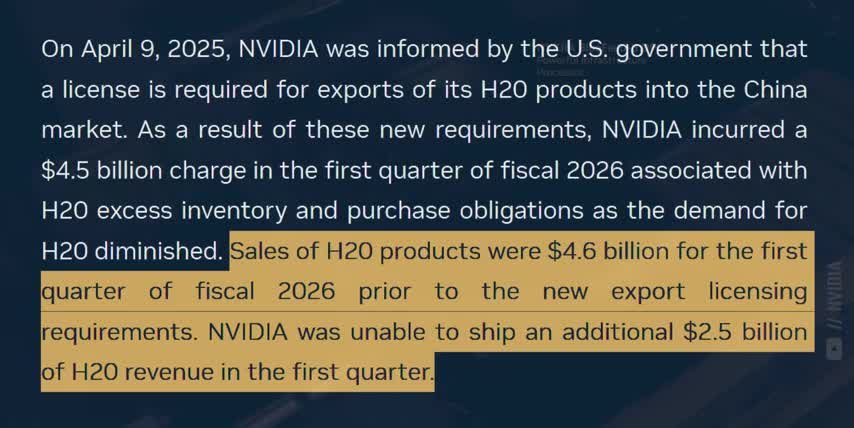
But I'm 100% certain that Blackwell sales will accelerate, since the B300 Blackwell Ultra chips are finally entering full-scale production, which means they're going to start contributing to NVIDIA's data center revenues later this year and into 2026. And if you've been following this channel for a while, you know that the key to finding great stocks is understanding a company's products, not just their profits.
Thoughts on Nvidia Stock
And the best investments are in companies with platforms that other businesses pay to build on top of. That's why I spend so much time traveling to AI conferences around the world and learning how real businesses are building on top of these accelerated computing platforms. And the more companies and industry experts that I talk to, the more I understand why Nvidia currently has over a 90% share of the data center GPU market, even before Blackwell production is fully ramped.
Nvidia's hardware and software ecosystems are the picks and shovels of the entire AI gold rush. And how big that gold rush will end up being depends on how fast Nvidia can deploy their AI chips around the world, and at what price. On this most recent earnings call, Nvidia's CFO Coet Kress said that they expect AI infrastructure spending to reach 3 to 4 trillion dollars by the end of the decade, which is twice as much as they expected a year ago.

As a result, Nvidia is on pace to make over $200 billion in AI infrastructure revenue this year alone. That's why I think that Nvidia is still a great investment, even though it's already the biggest company on earth. And one thing I always get asked is how I can cover so many stocks when news sources constantly use clickbait headlines and put a spin on the truth. My secret weapon is a platform called Ground News.
Ground News analyzes over 60,000 articles a day and rates each news source for political bias and factuality. For example, check out this story about Nvidia and AMD paying a 15% tax on chips sold to China. Right away, we can see over 500 sources reported on this story, with 20% more coverage from the left versus the right. And while most of them have a high factuality rating, there's some serious bias here.
Headlines from left-leaning sources are calling this export tax a bribe and questioning its legality, while sources on the right focus on the revenues it'll generate for the US government. And their blind spot feed shows me what stories are being ignored by one side or the other. Because knowing what isn't being talked about is just as important as what is. These features help me keep my facts straight and my research unbiased, while saving me a ton of time.

And right now, Ground News is giving my audience 40% off their Vantage plan. That's their biggest discount yet. So go to ground.news/tsy or click my link in the description to get unlimited access to every Ground News feature for just $5 a month. Alright, so Nvidia's revenues and earnings per share both grew by over 50% year over year.
On top of that, they expect AI infrastructure spending to reach $3-4 trillion by the end of the decade, which is why we can expect revenues from Blackwell and now Blackwell Ultra to keep accelerating quarter after quarter and year after year. But on top of that, we already know what Nvidia's next three sets of chips are after Blackwell Ultra: their Ruben chips, which are expected to ship in 2026, the Ruben Ultras in 2027, and the Fineman architecture scheduled for 2028.
Now let me show you a few things that will put you ahead of almost every investor and Wall Street analyst trying to cover this stock. When most people think about GPUs, they think about one kind of chip that goes into a single computer. But when Nvidia announces a new GPU architecture like Hopper, Blackwell, Ruben, or Fineman, they're actually announcing six different data center technologies: the GPU itself, a CPU, a data processing unit (or DPU), and VLink switches for chip-to-chip connections in a single rack, and two different kinds of rack-to-rack networking solutions called InfiniBand and Spectrum X.
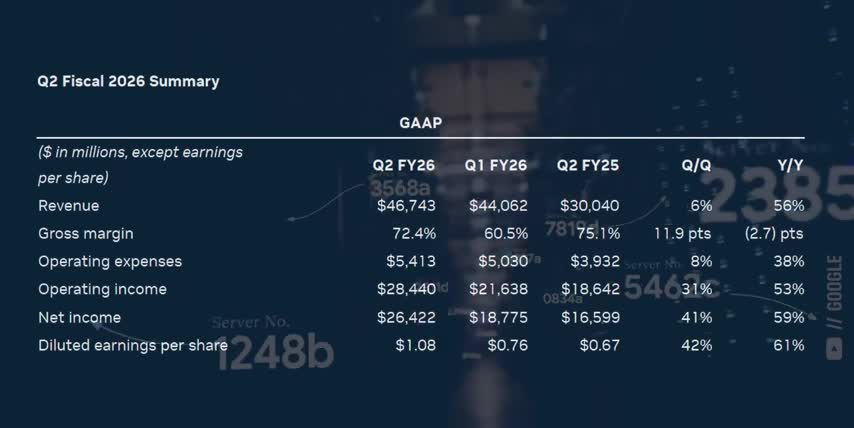
In fact, 7.3 billion dollars of Nvidia's revenue came from networking products this past quarter, which is still more than double all of AMD's data center revenues today. But if each architecture actually includes six separate technologies, then we should take the time to understand how they all fit together. There are two ways to scale compute power: Scaling up means increasing the amount of compute in a single rack, while scaling out means connecting more and more racks together.
Let's start from a single GPU and focus on scaling up. A Blackwell GPU is actually two GPU dies connected by a 10 terabyte per second link so that they act like one single GPU. This is a really clever chip design that gets around the size limitations of the most advanced chip-making machines that we have today. The Blackwell Ultra and the Ruben GPUs also have this two-die design, but the Ruben Ultra will connect four compute dies together instead of two. As a result, the Ruben Ultra GPU is expected to have over seven times the training performance of Blackwell and over 20 times the inference performance.
That means Nvidia's GPUs are improving more than twice as fast as Moore's Law. Anyway, here's where we start scaling up. The next level up is the GB200 Superchip, which pairs two Blackwell B200 GPUs with one Grace server CPU. The GB300 Superchip uses Blackwell Ultra GPUs, and when Nvidia starts shipping Vera Rubin, the Vera CPU will replace Grace. And two Rubin GPUs will replace the Blackwells.
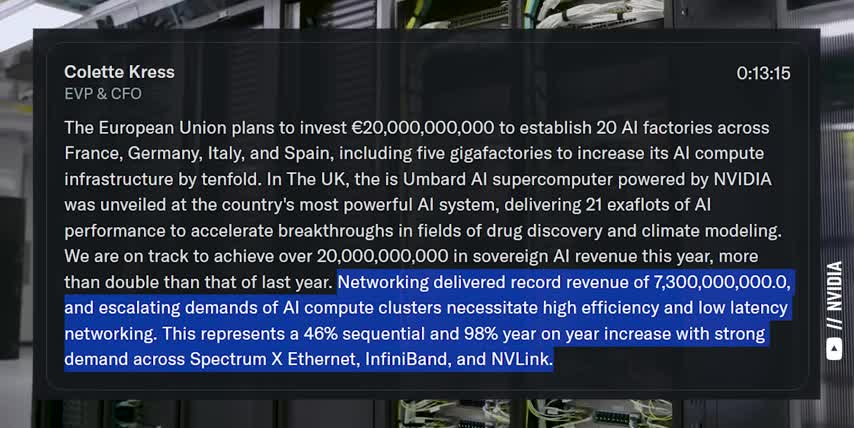
Vera has three times the memory capacity, twice the bandwidth, and double the performance of Grace, while using 30% less power. Either way, the two GPUs and the CPU are connected via NVLink, which is a chip-to-chip connection with 900 gigabytes per second of bandwidth. That's fast enough to move 150 full-length 4K movies between the chips every single second. Two of these Grace Blackwell Superchips go into a compute node, which is just one tray in Nvidia's AI data center rack.
The two Superchips per tray are also connected by NVLink. Today's Blackwell systems have fifth-generation NVLink chips in them, but next year the sixth-gen and VLink chips will double in speed, and the seventh generation will have twice as many ports to support Ruben Ultra's four-GPU design. On top of that, the recently announced NVLink Fusion will allow data centers to use non-NVIDIA chips at this level, whether that means Google's custom TPUs, Amazon's Tranium and Inferentia chips, or even AMD's GPUs.
The other part of scaling up is the Bluefield data processing units. These DPUs coordinate and secure the data moving between all these chips so that the GPUs and the CPUs don't have to spend cycles doing that. Either way, 18 compute trays go into one GB200 NVL72 system. Remember, each GB200 Superchip has two GPUs. There are two Superchips in each tray and 18 trays per rack.

2x2x18 is 72 Blackwell GPUs connected by NVLink, which is why the whole system is called the GB200 NVL72 for Blackwell and the GB300NVL72 for Blackwell Ultra. By the way, Nvidia is changing this naming convention for Rubin, probably because the Rubin Ultra has 4 dies per chip instead of 2. So the next generation rack will be called the VR200NVL144, even though it has the same amount of GPUs as Blackwell.
Blackwell, Blackwell Ultra, and Vera Rubin all go into a rack system called Oberon, and there are two important things that investors should know about them. First, Oberon racks are liquid cooled, which forces data centers to transition to liquid cooling if they want to use Nvidia's latest chips. That's the only way to cool so many high-performance chips that are packed together so tightly.
Around 90 of all server racks are air today, but industry estimates suggest that around 80 of data center cooling will eventually be direct liquid cooling. That's why I have Vertiv on my list of stocks to get rich without getting lucky in 2025. And second, today's Oberon racks have 10 compute trays on top, followed by nine networking trays in the middle, and then eight more compute trays on the bottom. Each of the nine NVLink switch trays have two NVLink chips each to connect four Blackwell GPUs. Four ports per NVLink chip times 2 chips per tray times 9 trays works out to 72 NVLink ports that connect all 72 GPUs in the rack together, so that they act like one giant GPU.
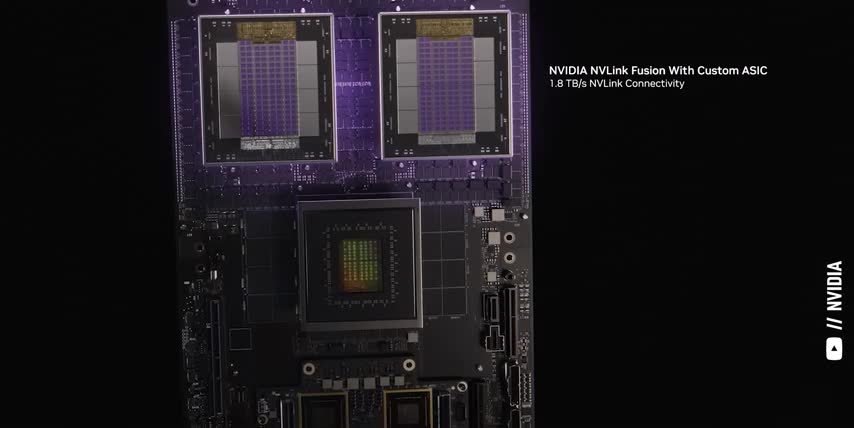
But here's where things get really crazy. Nvidia straight up deleted this design for Rubin Ultra. The next generation rack called Kyber will have 4 times more GPUs than Blackwell systems and over 5 times the performance per GPU, while using 5 times more power. As a result, a single Ruben Ultra rack can replace 21 Blackwell racks, at least in terms of compute power. 21 times the compute for five times the power means that these Ruben Ultra racks are a little over four times more power-efficient than Blackwell. In a world where every data center is limited by power and physical space, not by their budget, so Nvidia scaled up their single rack performance by 21x in just three years.
That's why Nvidia has so much pricing power, that's why Nvidia has such a massive share of the data center GPU market, and that's why it's so important to understand the science behind the stocks. And we haven't even talked about scaling out and all the innovations that Nvidia made for connecting multiple racks together. Remember, 7.1 billion dollars of Nvidia's revenue came from networking last quarter.
We also didn't talk about the massive CUDA ecosystem and the acceleration libraries that sit on top of that, or Nvidia's AI software suites and applications that fall under their other business units, or the fact that Nvidia might soon be able to sell any or all of these things to China, which is home to over half of all AI research on the planet. So let me know in the comments if you want me to make another video covering all of that. But for now, let's talk about the future of Nvidia stock.
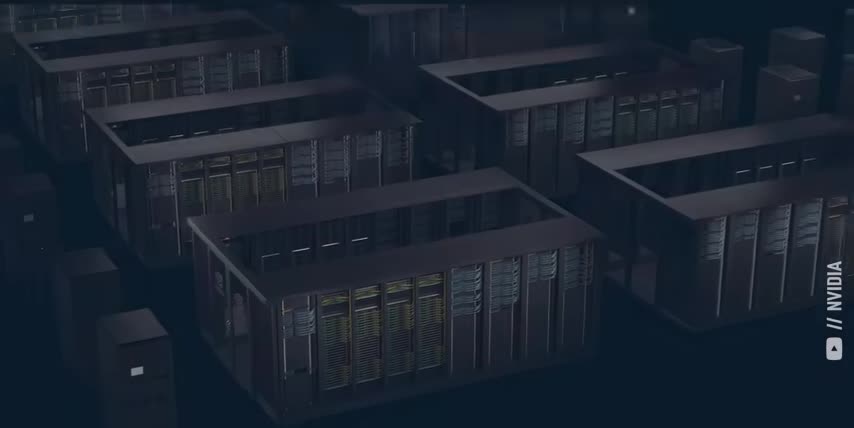
And if you feel I've earned it, consider hitting the like button and subscribing to the channel. That really helps me out, and it lets me know to make more content like this. Thanks, and with that out of the way, let's talk about Nvidia stock. Like I've been saying for years now, I think Nvidia will be the world's first 5 trillion dollar company and 6. Their revenue and earnings are still growing by over 50% per year, even without China.
They expect spending on AI infrastructure to reach $3-4 trillion by 2030, which is double their estimate from just one year ago. And on top of that, Nvidia's stock is still relatively cheap, with just half the price-to-earnings ratio of their two biggest competitors, Broadcom and AMD. That's why I'm still dollar-cost averaging into Nvidia, and why it's staying at the top of my list of stocks to get rich without getting lucky. Only behind a fund that it's already at the top of anyway.
Just because it's the biggest company in the world today doesn't mean it won't keep growing, just like Microsoft did and Apple before that. But since they doubled their estimate on global AI infrastructure spending, I'm going to move Vertiv up one spot on my list, since that should mean double the liquid cooling for data centers, which is Vertiv‘s fastest-growing business unit. Let me know if you want me to make a deep dive video on Vertiv or really any other stock on this list.
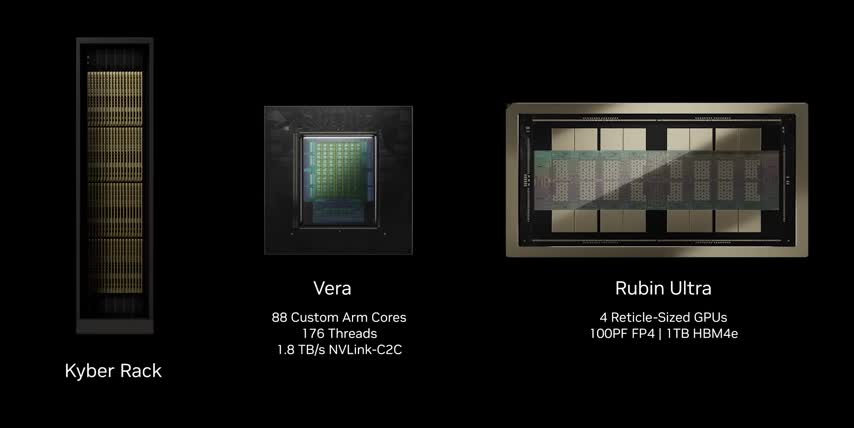
And if you want to see the other stocks that I've been investing in, check out this video next. Thank you for reading. The TickerSymbol: YOU team reminds you that the best investment you can make is in yourself.
Key Takeaways
Nvidia's latest earnings results show significant growth, with revenues and earnings per share increasing by over 50% year over year. The company's data center business is driving this growth, with revenues reaching $41.1 billion. Nvidia's AI chips are improving at a rate faster than Moore's Law, with the Ruben Ultra GPU expected to have over seven times the training performance of Blackwell and over 20 times the inference performance. The company's hardware and software ecosystems are the foundation of the AI gold rush, and its ability to deploy AI chips around the world will determine the size of this market. With a strong position in the data center GPU market and a growing presence in the AI software market, Nvidia is well-positioned for continued growth and is still a great investment opportunity.
Checkout our YouTube Channel
Get the latest videos and industry deep dives as we check out the science behind the stocks.

